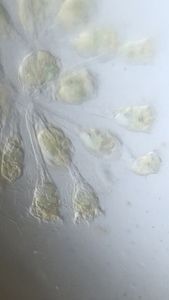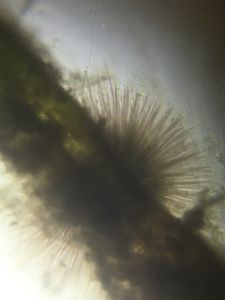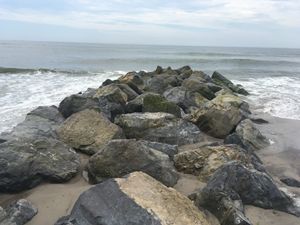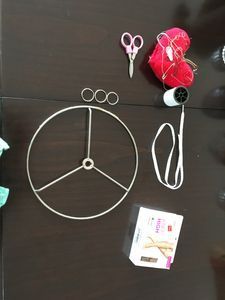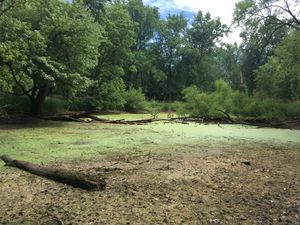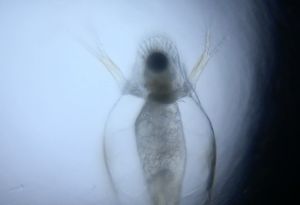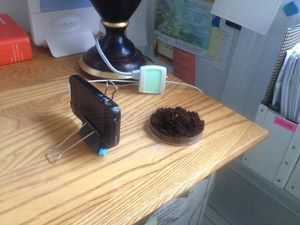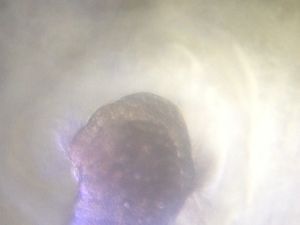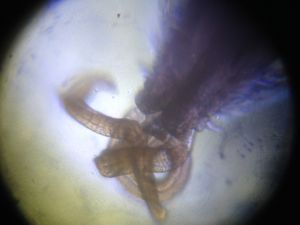In DUMBO
 Nov 22, 2015 • 5:13 PM UTC
Nov 22, 2015 • 5:13 PM UTC Unknown Location
Unknown Location 140x Magnification
140x Magnification Microorganisms
Microorganisms
Matthew Rossi
I'm a novelist, essayist, and a writing consultant. I work in the writing centers at Columbia and Baruch University and explore research into the overlap of maker cultures and writing. My work with the Foldscope tends to focus on finding wild creatures in urban spaces and looking at how human works are shaped by the movements of the biosphere.
40posts
105comments
4locations
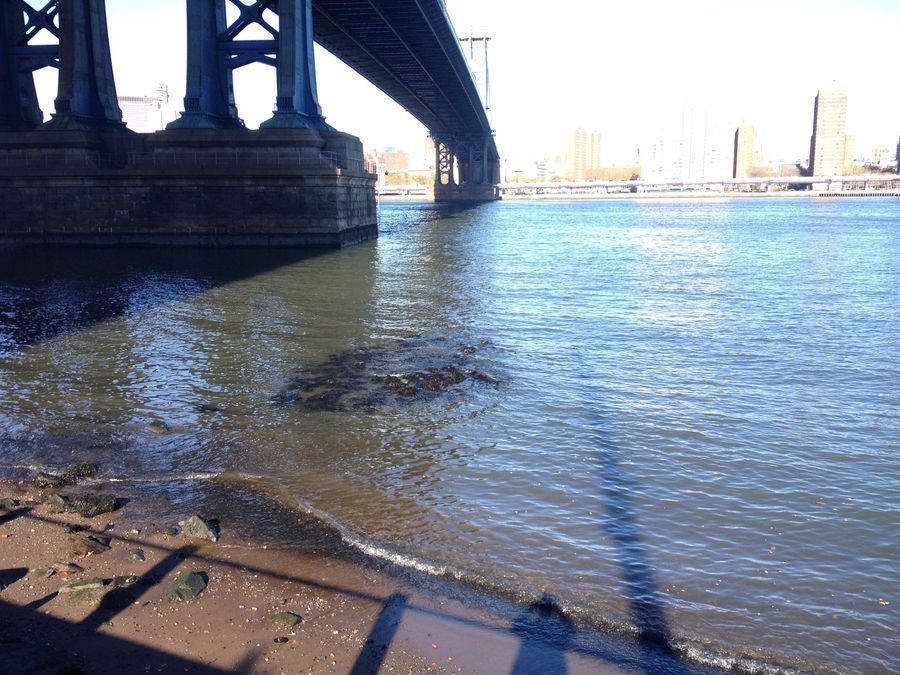
If, while in Brooklyn, you head west, back toward Manhattan, and continue in that direction down a long hill, until you are in the narrow wedge between the Manhattan Bridge and the Brooklyn Bridge, you’ll find you are in a neighborhood called DUMBO. I offer up this fun bit of New York trivia you can impress your friends with (if your friends are the sorts to be impressed by New York trivia): the name DUMBO is one of the most complex in a long tradition in NY real estate of naming neighborhoods with acronyms. In the case of DUMBO, it’s Down Under the Manhattan Bridge Overpass.
Of course, if realtors in New York were at all concerned about geographic accuracy, they would rename the area Slightly Left or Right of the Manhattan Bridge Overpass (though that would be SLORMBO, which is not nearly as appealing) because directly under the overpass, you find a neighborhood of a different sort.
Of course, if realtors in New York were at all concerned about geographic accuracy, they would rename the area Slightly Left or Right of the Manhattan Bridge Overpass (though that would be SLORMBO, which is not nearly as appealing) because directly under the overpass, you find a neighborhood of a different sort.

Another fun bit of New York trivia is that the East River, which the Brooklyn Bridge spans, is actually not a river, at all. It is actually an interstitial tidal creek, connected at both ends to the ocean. At just about low tide, that cluster of rocks and seaweed becomes exposed, and a brilliant tidal pool forms. I’ve never been able to resist the lure of a tidal pool, the promise of discovery that comes with it, and since we’re experiencing an unusually (and frankly, quite frighteningly) warm November, last weekend I took my plankton net out with me and gathered some creatures to look at. My plankton net met an unfortunate end, though (Pro tip when using a plankton net: make sure it’s attached to you before you toss it into the water), so I focused on what I could find living in the seaweed.

As it turns out, that’s quite a bit. The East River has a reputation for being a heavily polluted, unlivable waterway, but right away I saw creatures moving around in my jars. The first of these were skeleton shrimp, which I caught climbing up the branches of the mermaid’s hair and posing as seaweed to wait for passing creatures to hunt. When they weren’t moving, this camouflage was so effective that it was nearly impossible to see them. Their back feet helps keep this illusion.
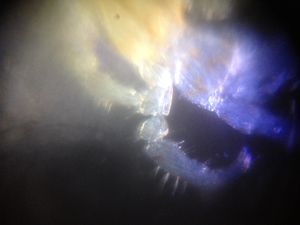
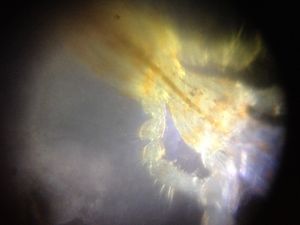
A long, many jointed body and back claws that wrap around the base of the seaweed let it hang out like a praying mantis, catching whatever floated by with its claws.
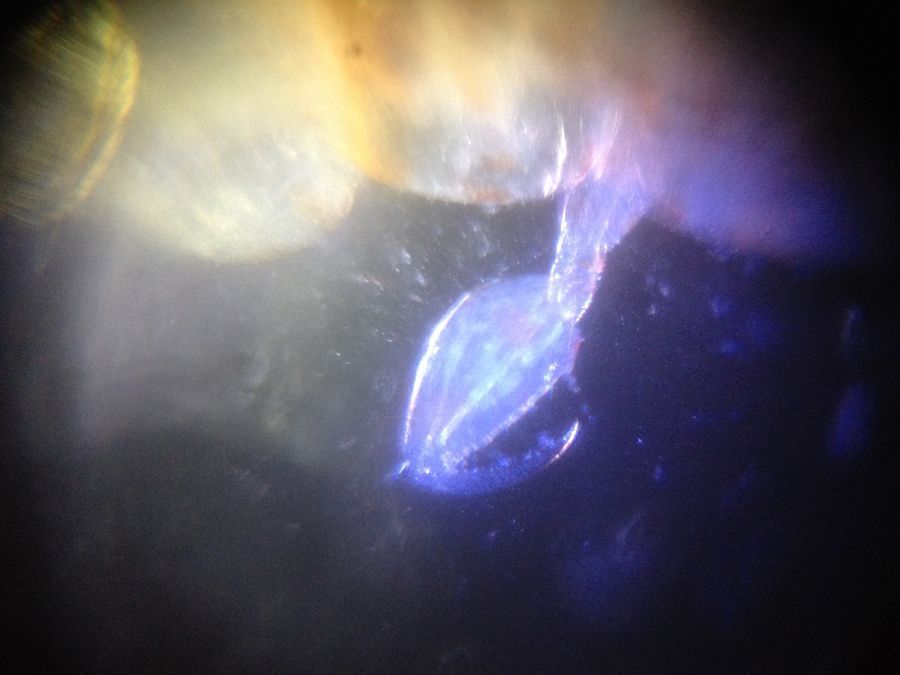
These skeleton shrimp were such effective hunters that within a single night, the population of free swimming amphipods in the jar dropped to nearly zero. Which also had the unfortunate side effect of making the water less hospitable to life, so I had to separate out a few interesting samples of seaweed from the jar and put the rest back into the river.
While searching through these samples, though, I found, much to my amazement, a nudibranch crawling along, also well hidden among the plants.
While searching through these samples, though, I found, much to my amazement, a nudibranch crawling along, also well hidden among the plants.
Considering that just a few weeks ago, I commented on this very site that I was jealous of other people who could go hunting among the kelp beds and find nudibranchs, this was very much a jackpot sort of find. The nudibranch has managed to keep an interesting sort of balance in the retooled sample container. It wanders around eating many of the protozoa in the water, keeping their population in check. The bits of seaweed meanwhile seem to keep the water oxygenated enough for everyone. Though it’s too large a creature to really benefit from a microscopic shot, I did manage to catch its gills ever so briefly in the microscope.
The luck in catching the nudibranch was doubled a few days later when it laid eggs, first at the surface of the water, and then again a few days later on the side of the jar.
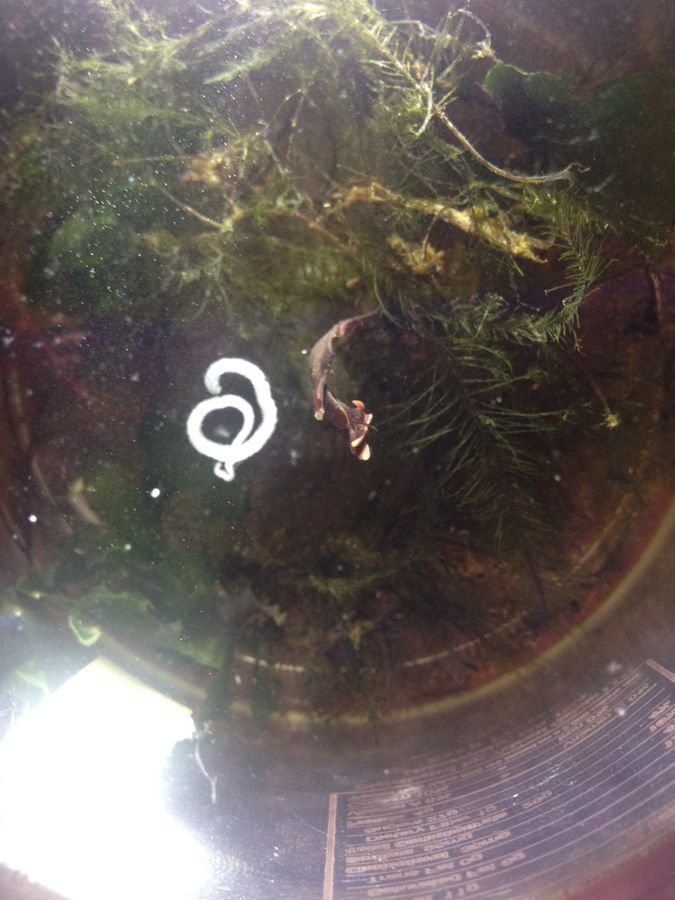
I’m not sure if they’re fertilized or not. Knowing that nudibranchs can’t fertilize themselves, I would guess that the nudibranch either was fertilized before I caught it, or these eggs are infertile. Microscopic shots haven’t revealed much yet. This is a long video of the eggs taken a day or so after they were laid.
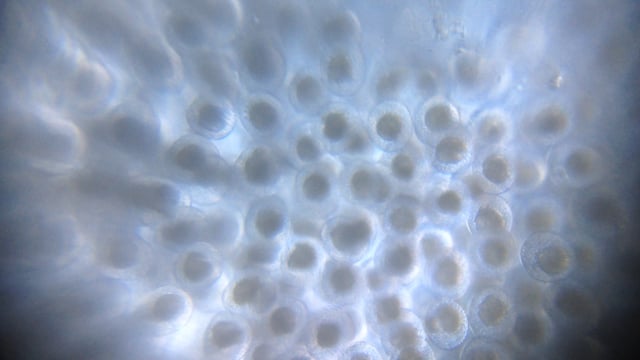
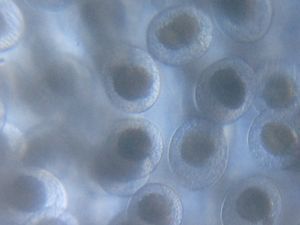
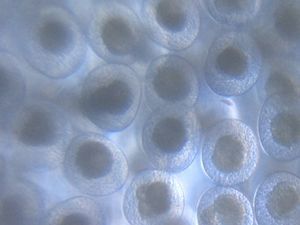
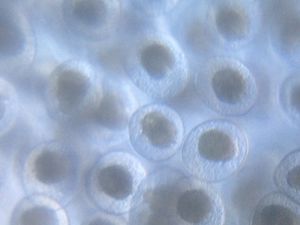
In the closeup photos, I see what looks like cell division to me, though I am skeptical of what my eyes are showing me. I so very much want to see tiny baby nudibranchs swimming around in my tank that it is possible I’m just seeing what I want.
Clearing out the sample jar and allowing for a more sparse collection of seaweed and water has also allowed me to start taking in the numbers of free-floating plankton and other tiny creatures in the jar. Among these, a small population of naupilius larvae has surfaced.
Clearing out the sample jar and allowing for a more sparse collection of seaweed and water has also allowed me to start taking in the numbers of free-floating plankton and other tiny creatures in the jar. Among these, a small population of naupilius larvae has surfaced.
I would guess this belongs either to a species of copepod or to barnacles, which there are many of in the water. You can see clearly the movement of the naupilius, its incredible speed and its form in multiple dimensions as it floats through the water.
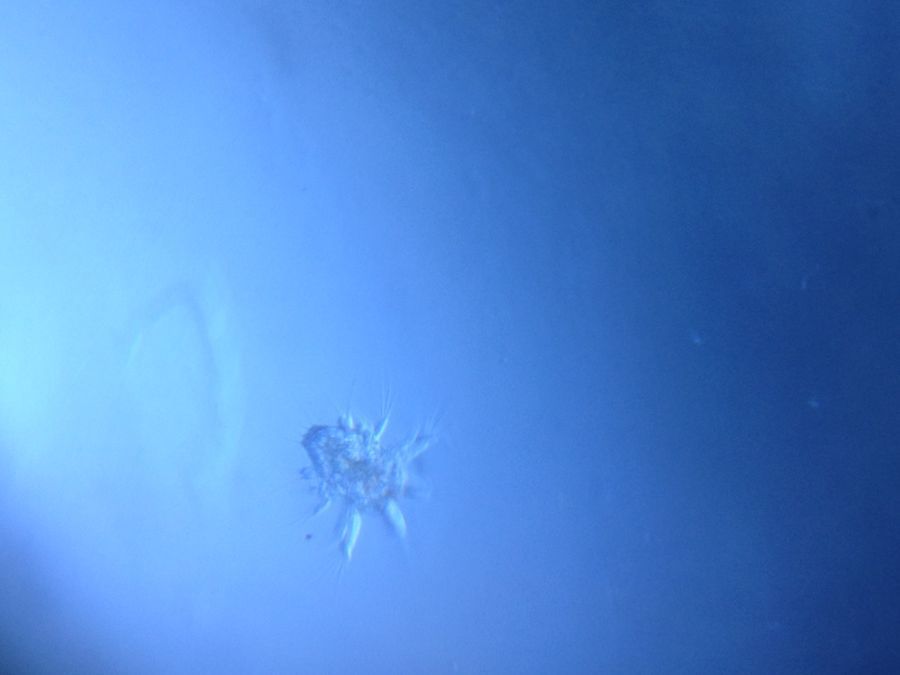
The speed with which it moves made catching a still shot difficult, but I managed a few closeups of it that catch that mite appearance.
They are joined by a planarian, this one so small that it barely seems to be a worm at all, floating around in the water like a cartoon ghost riding a small carpet of cilia.
They are joined by a planarian, this one so small that it barely seems to be a worm at all, floating around in the water like a cartoon ghost riding a small carpet of cilia.
In this shot, you can plainly see the movement of cilia around its body.
I’ve found planarians (another model creature in science) in virtually every water sample I’ve ever taken, and I always learn something from finding them. I had never, for example, realized that part of their ability to swim is driven by cilia, and yet here is visible proof of that.
Multiple adaptations of cilia were present in the water. The evening after I transferred the sample to its new container, I found this vorticella colony floating at the surface.
Multiple adaptations of cilia were present in the water. The evening after I transferred the sample to its new container, I found this vorticella colony floating at the surface.
This is the second of several such colonies I’ve seen. They look to me like thought maps floating in the water. Here is one floating on what seems to be a small seed. I lit it using a side light technique to get the color of the object, and it looked so much like an apple, I couldn’t resist naming it.
They are just a few of the extraordinary variety of creatures I’ve found clinging to these small samples of grass. Last among them (for this post, anyway, if not for nature) are the diatoms. I noticed them hanging off of the seaweed, and assumed they were some kind of egg.
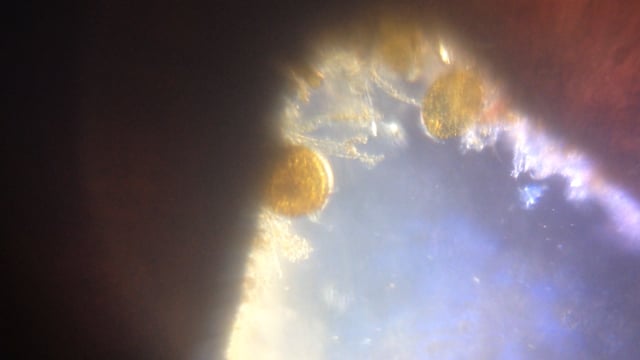
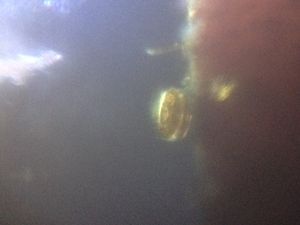


They are so prevalent in this water that I have also found long chains of diatoms wrapped around seaweed stalks.
I am planning to spend some time with this water in coming weeks. Of course, I hope the nudibranch eggs will hatch and give me some more veligers to look at, and some tiny nudibranchs to follow, but this post has also only scratched the surface of what I’ve found living in this water. These are the macro creatures, but the protozoa in this water swarm to a degree I’ve never seen in another sample. I have literally hundreds of pictures taken from this sample already. If the water stays healthy, I’ll have a few weeks of posts out of it.
When I commented a few weeks ago that I wished I could live in a place where I could harvest nudibranch eggs, I committed a fallacy in which I allowed myself to assume that life was elsewhere. That I was somehow not living in a place where I could find things to look at. But, of course, life is everywhere, and while I might assume I cannot find interesting things in the city, they are here. In a tidal pool no more than four feet wide, I’ve found creatures I never thought I would find in my city.
I am planning to spend some time with this water in coming weeks. Of course, I hope the nudibranch eggs will hatch and give me some more veligers to look at, and some tiny nudibranchs to follow, but this post has also only scratched the surface of what I’ve found living in this water. These are the macro creatures, but the protozoa in this water swarm to a degree I’ve never seen in another sample. I have literally hundreds of pictures taken from this sample already. If the water stays healthy, I’ll have a few weeks of posts out of it.
When I commented a few weeks ago that I wished I could live in a place where I could harvest nudibranch eggs, I committed a fallacy in which I allowed myself to assume that life was elsewhere. That I was somehow not living in a place where I could find things to look at. But, of course, life is everywhere, and while I might assume I cannot find interesting things in the city, they are here. In a tidal pool no more than four feet wide, I’ve found creatures I never thought I would find in my city.
Sign in to commentNobody has commented yet... Share your thoughts with the author and start the discussion!
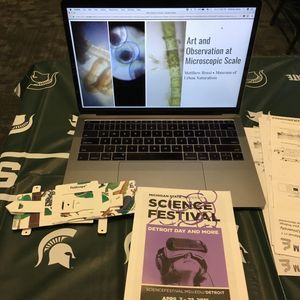
 0 Applause
0 Applause 0 Comments
0 Comments




